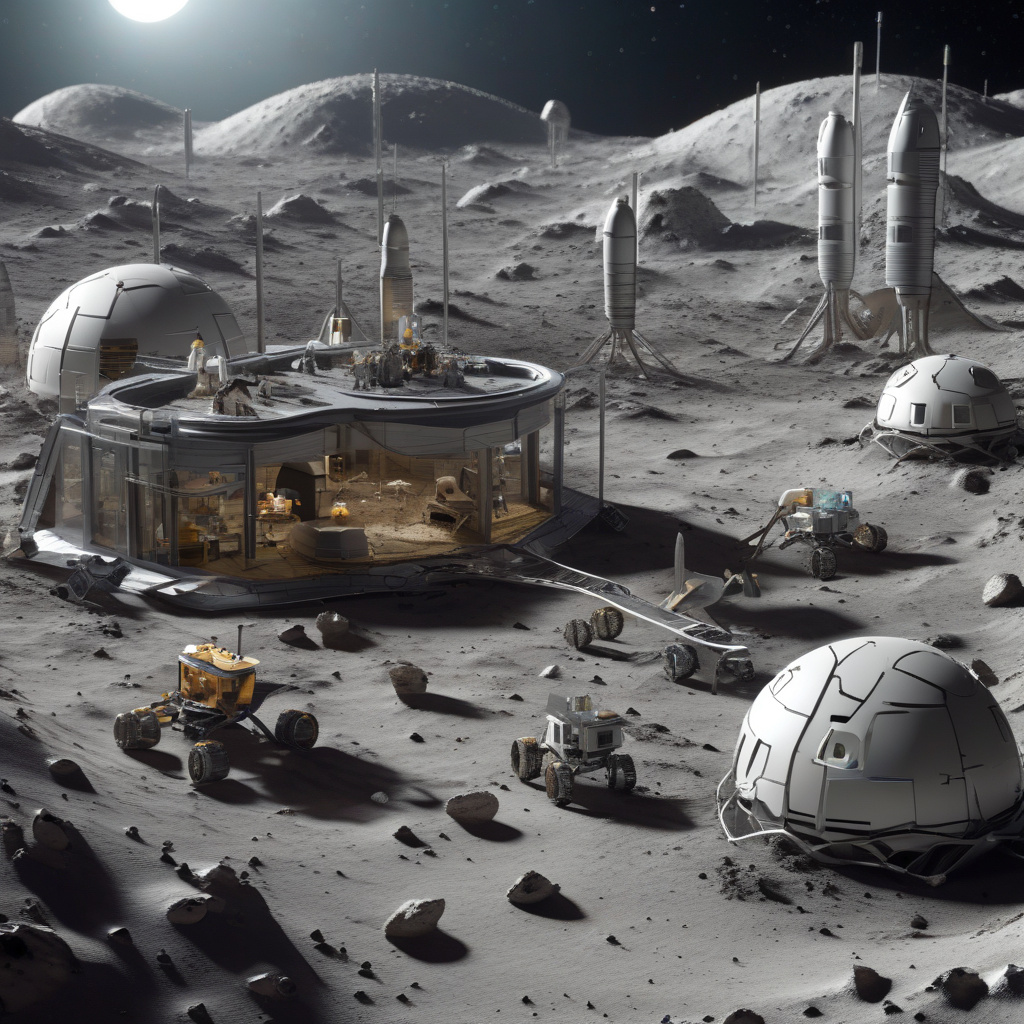Moon Settlements Could Utilize Brick-Repairing Bacteria for Sustainable Habitats
The US and China aim to establish a long-term settlement on the Earth’s natural satellite, the Moon. One of the key challenges in building habitats on the Moon is ensuring their longevity and durability in the harsh lunar environment. To address this issue, researchers are exploring innovative solutions that could revolutionize the way we think about construction in space.
One such groundbreaking idea involves the use of brick-repairing bacteria to create long-lasting habitats on the Moon. These specially engineered bacteria have the remarkable ability to produce a natural glue-like substance that can bind lunar soil particles together, effectively repairing any cracks or damage that may occur over time.
The concept is inspired by the way certain bacteria on Earth form mineral deposits, such as the way bacteria can harden loose sand into a form of sandstone. By harnessing the natural processes of these bacteria, scientists believe they can create self-healing habitats that are more resilient to the extreme conditions of the Moon.
In addition to their repair capabilities, these bacteria could also play a crucial role in the initial construction of lunar habitats. By mixing the bacteria with lunar soil and a gel-like nutrient solution, researchers can create a biological concrete that can be molded into bricks or other structural components. As the bacteria grow and multiply within the material, they bind the particles together, forming a solid and stable structure.
Not only does this approach offer a sustainable way to build on the Moon, but it also has the potential to significantly reduce the cost and resources required for construction. Traditional building materials would need to be transported from Earth at great expense, while the bacteria-based approach utilizes local resources and the natural regenerative abilities of the bacteria themselves.
Moreover, the use of bacteria in construction is not limited to the Moon. Similar techniques could be applied to future missions to Mars or other celestial bodies, offering a versatile and eco-friendly solution to building habitats in space.
While the concept of using bacteria to repair and build structures on the Moon may sound like science fiction, researchers are already making significant strides in this field. Experiments in simulated lunar environments have shown promising results, demonstrating the feasibility and potential of this innovative approach to construction.
As we look towards a future where humans will live and work on other planets, creative solutions like brick-repairing bacteria could hold the key to overcoming the challenges of space exploration. By leveraging the power of nature and biology, we can create sustainable habitats that will not only withstand the rigors of space but thrive in them.
In conclusion, the prospect of using bacteria to repair and build habitats on the Moon offers a glimpse into a future where technology and nature work hand in hand to enable human colonization of other worlds. With further research and development, this innovative approach could pave the way for a new era of sustainable construction in space.
moon settlements, brick-repairing bacteria, sustainable habitats, space exploration, innovative construction techniques












